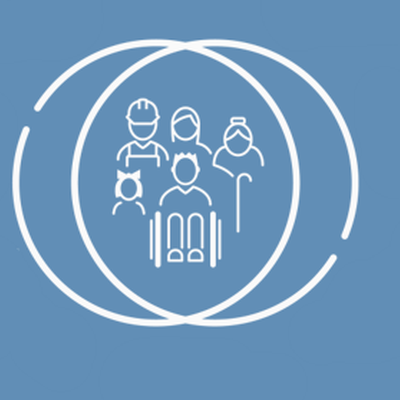Four-fifths of humanitarian crises now last five years or more, causing traditional short-term responses to become increasingly recurrent. It is therefore important to start thinking long-term while responding to immediate needs.
One recent innovation is cash transfers delivered directly to people caught up in humanitarian crisis – a step towards social protection, traditionally the domain of longer-term development actors.
Policy makers and practitioners involved in development and humanitarian action met in Brussels to share experiences of building up countries’ social protection systems before, during and after shocks, to protect the most vulnerable.
To ensure that investment in resilience building takes place before, during, and after crises, both humanitarian and development organisations need to match up their differing funding timespans, mandates and methodologies, according to experts at the International Conference on Social Protection in Contexts of Fragility and Forced Displacement. But some of the groundwork is already laid, according to Alexandra Yuster, Associate Director at Unicef.
“There’s momentum coming from two trends, one from development, one from the humanitarian side,” said Yuster. “There’s been an exponential increase in the number of lower income countries adopting social protection programmes like child grants and pensions.”
This, she added, can pave the way for better responses during crises. “And at the same time, there’s agreement from the international community that providing people with cash is a dignified and appropriate way to respond to humanitarian crises - it allows people to make their own decisions.”
“These two ideas are coming together at a time when we have larger than ever problems,” said Yuster, referring to ongoing refugee crises and conflicts, which have left over 65 million people displaced around the world. “But we have tools to respond, and hopefully they can be shared and adopted.”
Takeaways from the humanitarian side...
One key takeaway from the conference was to avoid creating parallel systems wherever possible. For example, when a country (or its neighbour) is hit by crisis, humanitarian efforts can tap into existing social protection systems to deliver aid.
“Where you have an existing social protection system with ways of measuring vulnerability and targeting families and the necessary political will,” said Ted Chaiban, Programme Division director at Unicef. “Then the UN and NGOs should work with the government to absorb populations displaced by manmade or natural disasters. Where you don’t have one, the humanitarian response can be designed in a manner that sets up the building blocks for a social protection system.”
|
Alexandra Yuster, Ted Chaiban and Kenn Crossley on the key takeaways from the conference and views on cash transfers as part of an emergency response: |
Where no social protection system exists in a disaster-struck country, or there is only a rudimentary one, humanitarian actors can help build the foundations of a stronger system, working from the beginning to ensure a smooth handover to development partners or the government.
Humanitarian actors’ experience in identifying vulnerable groups, targeting programmes, monitoring the effects of assistance and adjusting programmes accordingly can all feed into designing better social protection systems.
“We find that a lot of governments don’t have [social protection] systems in place to meet the needs of vulnerable people in the hardest to reach places, which is where humanitarian action has traditionally specialised” said Kenn Crossley, Deputy Director, Programme and Policy Division at the UN World Food Programme. “We can bring our operational experience from the most difficult contexts to help governments shape and develop national systems that can end hunger and achieve sustainable development. This will have an enduring impact beyond the attention span of the current crisis we might be responding to.”
Crossley gave the example of Lebanon, where humanitarian aid for displaced Syrians is also having an effect on the social protection system for locals.
“While the World Food Programme has set up systems to distribute assistance to vulnerable Syrians, we also engaged early on with the NPTP [Emergency National Poverty Targeting Programme], the programme Lebanon set up to work with vulnerable Lebanese,” said Crossley.
“The same competencies, expertise, delivery systems and knowledge that we brought to humanitarian aid, we are bringing to the government’s own national poverty targeting programme. This is an example of the kind of skills from the humanitarian world now having an impact in a more development context with durable value over time,” he added.
...and from the development side
Meanwhile development actors, whose traditional remit is long-term, are increasingly concerned with helping partner countries build strong social protection systems that are prepared to cope with sudden shocks.
|
Connecting the dots: Social protection and security In fragile contexts it’s important to think about social protection beyond the obvious targets: for example, to consider the impact of the social protection afforded to security forces. According to an Ambassador of Finland’s Foreign Affairs Ministry, there are wide-ranging benefits to the most vulnerable when their national police force receives an adequate salary and employment rights - from helping to dispel a culture of bribes; to enabling female police officers to work, which benefits women in the community. |
Some 130 countries around the world now have some kind of social protection programme in place, but they are not necessarily available to new arrivals, nor equipped to cope with increased needs during emergencies.
“We need to systemically prepare social protection systems to absorb populations affected by disaster,” said Chaiban. “That means working out arrangements that are acceptable to the local community and host government, and making sure relief efforts don’t undermine or substitute existing systems.”
In a best case scenario, external aid can provide a kind of surge capacity to social protection systems during emergencies, helping them accommodate more users or higher demands from the existing population. That could be via cash transfers or supporting a range of complimentary social protection elements: from allowing displaced people to access existing health insurance schemes, to removing school fees so refugee children can join existing schools, as in Lebanon and Jordan.
“We need to recognise that conflicts nowadays are often generational,” said Chaiban. “So you need sustainable solutions, relying on local infrastructure, and integrating into national systems so it can be sustained over long term.”
Doing both
The European Commission, one of the organisers of the conference, is striving to make better links between its humanitarian and development branches – the Directorate-Generals ECHO and DEVCO, as well as NEAR, which carries out development work in European Neighbourhood countries. The three Directorates are currently working on a common Guidance Package on “Social protection across the humanitarian-development nexus” for dissemination to field and HQ staff.
The Guidance Package will provide Commission staff with an overview of the key information, tools and procedures to work with social protection programmes, systems and approaches in situations of shocks and protracted crises.
|
Jean-Louis De Brouwer on the humanitarian-development nexus: |
“It’s not easy for DGs to collaborate, not to mention transferring funds from one instrument to another,” said Juergen Hohmann, a social protection expert at DEVCO.
Humanitarian budgets are by definition quick and flexible, allowing DG ECHO to spend rapidly on demand in smaller amounts, within limited periods of time. Development budgets are by nature longer-running, and take much longer to mobilise.
“What we are developing requires innovation, including administrative innovation,” said Hohmann.
The DGs also have different methods and modalities. “[ECHO’s] mandate means we move in a non-governmental area - we work with partners, INGOs, UN agencies, the Red Cross/ Red Crescent family,” said Jean-Louis de Brouwer, Director of Humanitarian and Civil Protection Operations at ECHO. “In principle, we never work with the government – we never subsidise public authorities. Which is exactly what development policy is doing.”
|
Montse Pantaleoni and Juergen Hohmann on challenges and progress in bringing ECHO and DEVCO closer together on social protection in fragile settings: |
Yet beyond the technical differences, the DGs work on similar issues, and are often side by side in partner countries. The new framework builds on experiences under the previous guidance, LRRD, or ‘linking relief, rehabilitation and development’.
“We have some success stories on the work we do jointly with DEVCO – the so-called LRRD – and we should continue to work together if we want to reach the maximum number of people in need efficiently and effectively” said Montse Pantaleoni, Policy Officer at ECHO.
“Social protection brings humanitarians and development actors together as it focuses on people, especially the most vulnerable,” she continued. “We have to develop best practices and this is why the guidance package is important as it will bring evidence in how to link humanitarian aid with longer term development programming through the interface of social protection systems and planning.”
This collaborative piece was drafted by Sophie Lewisohn.
Image credit: Tim Dirven/WFP via Creative Commons license 2.0




Log in with your EU Login account to post or comment on the platform.